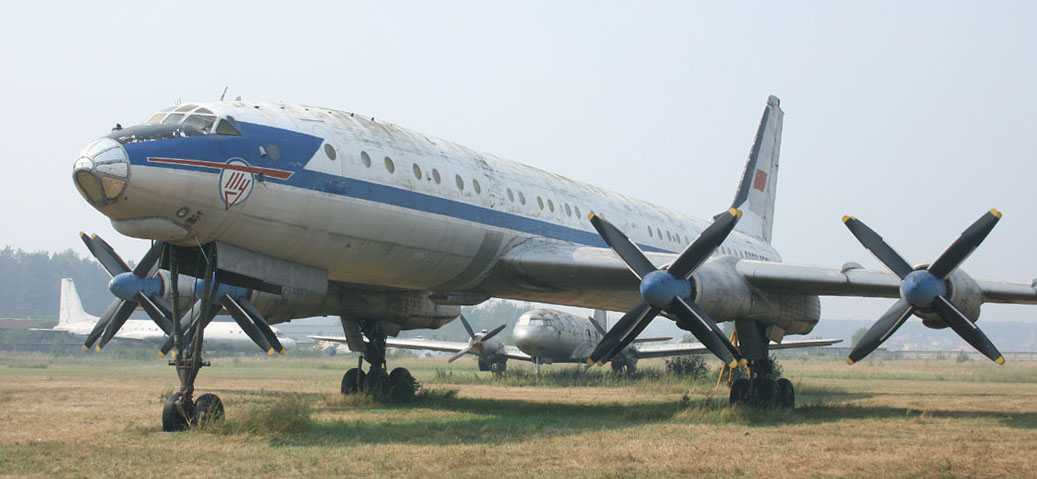
Tupolev Tu114/Tu95/Tu142
 |
| Tu114 CCCP-L5611 is one of a dwindling number of the type still preserved, all in Russia. This former Aeroflot aircraft was seen at the Centra Russian Air Force Museum in 2010 |
| The Tupolev Tu114 was the world's fastest propeller driven transport,
the only such type to feature swept wings and tail. It was also one of the most
impressive looking airliners ever built. Designed alongside the TU95 - or Tu142 - strategic bomber, early details are shrouded in Soviet Cold War mystery. But the prototype is believed to have completed its flight test programme in 1956 - two years after the Tu95 - powered by four 12,000-ehp Kuznetsov NK-12M turboprops. The top cruising speeds was 770km/h (478mph) at 9,000m (29,528ft). Production aircraft switched to the NK-12MV, each driving four-blade contrarotating propellers. The Tu114, named Rossiya, was intended to replace the IL14 medium range airliner on Aeroflot's longer routes and the type set a number of speed records in 1960 and 1961 with the mark M engines. But considerable problems were experienced with powerplant overheating and fires and the type did not enter service until April 1961, two years behind schedule. Aeroflot typically operated the aircraft with seating for 100 to 120 passengers on intercontinental flights and up to 200 on shorter sectors. The three main and four smaller cabins were furnished with brass lamps and luggage racks. The Tu95 (with a service designation Tu20) was named Bear by Nato and entered service in 1956. The Bear A had a glazed nose and gun sight blisters on the rear fuselage and a rear gun position. The Bear B featured a solid nose with an enormous radome and carried a large cruise missile under the fuselage. It was first seen in 1961. The C version appeared in 1963 with large new blisters either side of the fuselage while the D was an ECM/ESM reconnaisance type with large belly radar. E was a reconnaisance version of A, while F carried further sensors. The last delivery was in 1962 and the type remains in limited service as a reconnaisance aircraft. The emergence of jet airliners reduced the production run of the Tu114 and only about 30 were built. The only variant was the Tu114D, a demilitarised Tu95 with a few cabin windows, which was built for urgent flights. The Tu114 was retired in October 1976 but then gained a new lease of life as the Tu126 Moss airborne warning and control (AWACS) aircraft with a large radar scanner above the fuselage. This aircraft was gradually phased out on its replacement by an IL76 derivative in the 1980s. Several airframes survive at aircraft museums in Russia, including a Tu114 and Tu142 at the air force museum at Monino, near Moscow. |
| Contents | Photos and census | Update | |